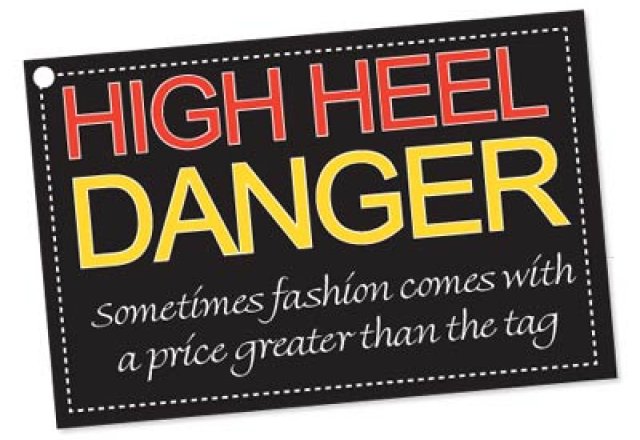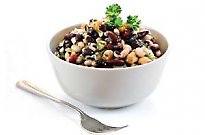
High Heel Danger

Sometimes fashion comes with a price greater than the tag
We walk about 128,000kms in our lifetime – the equivalent of three times around the world – and for the fashion-driven woman, a lot of those steps are spent clunking around precariously in high heels, stilettos and platforms. But what is this doing t
Here’s just something about women and shoes. Open a woman’s wardrobe and thongs, sandals, runners, boots and heels pour out. Ask her what she’s going to wear out dancing, shopping or to dinner tonight and she’ll probably rummage through the pile until she finds her favourite pair of high heels. But as she straps them on, podiatrists such as Matt Dilnot, board director of the Australian Podiatry Association, Victoria, are being flooded with sore-footed, high heel-wearing women with bunions and clawed toes, which even with modern surgery are difficult to correct.
“Walking in high heels puts approximately two tonnes of force on the ball of the foot and heel with every step, instead of an even distribution across the foot. In addition, the compression force on the knee joints when wearing high heels increases by 23 per cent compared to bare feet,” says Matt.
“A typical shopping day could result in a woman taking 5000-to-7000 steps, standing for long periods on uneven and possibly unstable surfaces and absorbing, even through the wearing of wedge-heeled shoes, considerable pressure and weight to her feet,” he says.
How high is too high?
“Although there is no defined height, the opinion is that the higher the heel the more potentially damaging the shoe is to foot and body posture. Anything over 2.5cm can cause problems, but the consensus is that shoes should never be worn with heels higher than six centimetres. Six centimeters and above is pretty much where everyone is going to suffer problems, even if you only wear them for two-to-four hours,” he says.
What about flat platforms?
They’re thick and plank-like and don’t arch your back like heels, but they tend to be heavier, creating other problems.
“The greater weight places greater strain around the pelvic area due to the force that’s required to swing the shoe through. They also tend to create problems with balance,” he says.
If you’re like me, all this bad news probably has you feeling like your only option is to turn into a bare-footed hippy and give in to your natural height. Well, before you hurl away every shoe you own in a state of panic, read on.
“The safer way to add height is to go for a pair of shoes with a thicker sole on the forefoot. This gives the illusion of more height while keeping the angle between the forefoot and heel lower. Go for as wide a heel as possible such as a block style. The ideal is a wedge sole, where the forefoot and heel are joined. This style reduces instability problems. Try and have a closed back instead of sling backs. Also ensure the shoe contours well to your arch both in the upper and sole to lessen the amount of sliding into the toe area which tends to cause corns and calluses,” he says.
Orthoses
They’re custom-made foot arch supports and can fit into high heel shoes. Matt says that although high heels aren’t ideal, orthoses can at least help reduce the damage to your feet.
- Neck and back problems from change in posture – high heels cause your pelvis to tilt forward and your back to arch.
- Osteo-arthritis (degeneration of the bone) in the ball of the foot.
- Extensive strain and early arthritis on knee joints.
- Blisters, pinched nerves, strained ligaments, tight calf muscles, joint deformation and inflammation.
- Damage to ankle joints from instability.
- Compression of discs in the spine and potential spinal damage, especially if there are already spinal problems.
- Bunions, blisters, in-grown toenails, calluses, thickened nails and muscle fatigue caused by overworking foot and leg muscles.
- Gradual and often permanent disfigurement of feet. Shortening of calf muscles.


